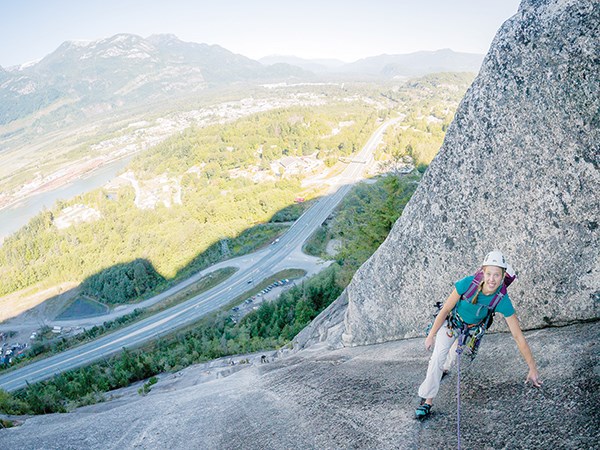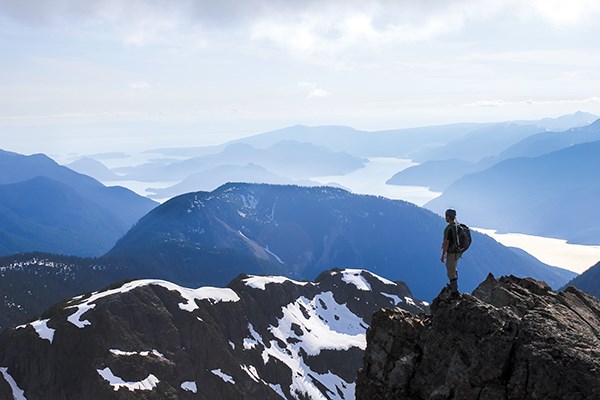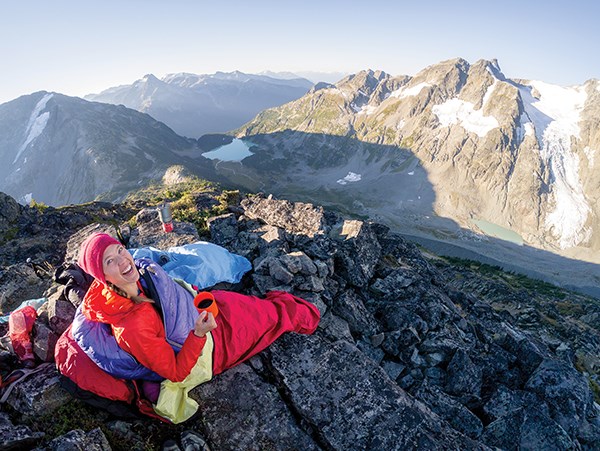I’m not really sure when I first learned the phrase “get your nose against it,” or who exactly said it to me, but it stuck. It has become so ingrained in me now as a mantra in the back of my mind that I haven’t even thought about those words for a long time, but I’ve been driven subconsciously by them.Â
Recently, though, I was reminded about this adage again when a friend was talking about a mountain adventure proposed by a couple of our other friends. He didn’t want to go with them as it sounded too dangerous.Â
I admitted it sounded ambitious but, sitting on a comfortable chair in a warm room days prior before the trip, I questioned how he could know that it was going to be dangerous.Â
I realized he was looking at the entirety of the undertaking and not seeing it as a series of small individual steps that simply need to be overcome to achieve the objective – in this case, a mountain summit.Â
As if bubbling up from somewhere in the recesses of my mind, I said, “Get your nose up against it first and then decide how dangerous it is, but not before that.”Â
He didn’t end up going on the trip. My friends reached their objective successfully.Â
It made me think about how I might view the mountains differently and have chosen to participate in fewer adventures over the past few years if the adage had never been introduced to me.Â
Thinking further, this frame of mind has also affected how I make decisions in my day-to-day life.Â
I recall the experience that first led me to adopt the adage as a way of thinking. I was standing in the saddle between two high peaks, looking across a valley at another higher summit that our group wanted to climb and feeling apprehension at the enormity of the undertaking ahead of us. Whispers and murmurs could be heard throughout our group, with the words “turn back” or “too difficult” spreading like wildfire in the wind.

All of this talk was abruptly put to an end when the group leader on this day said: “We’ll get our noses against it and then decide then if we’re turning back, but not before.”Â
Not fully understanding what he meant, we trusted his judgment and with the comfort of knowing that turning back was still an option, we proceeded. We reached the mountain, climbed up ledges and snow, found routes that bypassed difficulties and before we knew it, we were on the summit. We descended safely and made it back to our cars well before dark.Â
On the drive home, I was in a carpool with the group leader and I asked him what exactly our noses had to do with anything and why he’d used that phrase.Â
He explained that when you’re standing back, looking at the entire hulk of a mountain, the difficulties you see in climbing it are mostly imagined.Â
They might be easier or they might be harder, but it’s imaginary until you have to deal with them up close. The task of going from the valley bottom to the top of a large, glaciated summit is pretty difficult for the mind to comprehend as a whole, but the individual steps that make up that task are more manageable and easier to deal with.Â
He said when you get your nose against it, against the rock and snow – the actual reality of the mountain – and remove the imaginary assumptions you made about it from afar, you deal with the individual challenges of the route to the top and not the entirety of the mountain.Â
In many cases, when you have the mindset to climb a mountain one rock hold or footstep at a time, you are more likely to succeed.
His words sank deep, and I’ve used them to fuel how I proceed on nearly every challenge with which I’ve been faced since. Many times I’ve stood, looking out at the challenge ahead of me – whether it’s a difficult face to ski down or a large rock wall to climb – and reminded myself to understand the challenge ahead up close first, not simply from afar. Some of the large objectives I’ve reached felt like only a series of small individual obstacles while I was tackling them.Â
I’ve applied this approach to my own life outside of the mountains. If you want to move your home, change careers or integrate yourself into a new community, for example, looking at it from start to finish can be daunting. It can be difficult to even know where to start, so many people simply don’t.Â
I focus simply on the next step. When I get my nose up against the next small challenge, can I deal with it? In most cases, I can.Â
The real benefit to this frame of mind, to myself at least, is that it gives me an “out” – it allows me the option of turning around. When I see a mountain ahead that makes me nervous to climb, I tell myself, “You’re allowed to not do this. Just get your nose against it first, and if it’s still as difficult as you think, you can turn around.” In almost all cases it’s never as difficult as I imagined, but in some cases it has been, and I’ve turned around.Â
I actually find those instances where I was legitimately forced to turn back more valuable than when summits came easier than expected. By actually getting up close and touching the rock, I learn what skills and experience I will need for when I come back to attempt the mountain again. If I turn back from afar, the difficulties would have remained a mystery to me.Â
Like with all advice, though, you should temper it with common sense. If the mountain ahead has avalanche risks or you can visibly see loose rock coming down the route, getting your nose against it isn’t going to change these objective hazards.Â
Allow for failure when it comes to achieving a goal, but always go far enough that you understand why you failed. The lessons learned at that limit will be far more valuable than if you turned back early based on an assumption that proved to be imaginary.Â
Getting your nose against challenges will lead you to try new things, meet new people you may have avoided, have new experiences and, above all else, make you more competent and rational as you climb the mountains near our home of Squamish.





